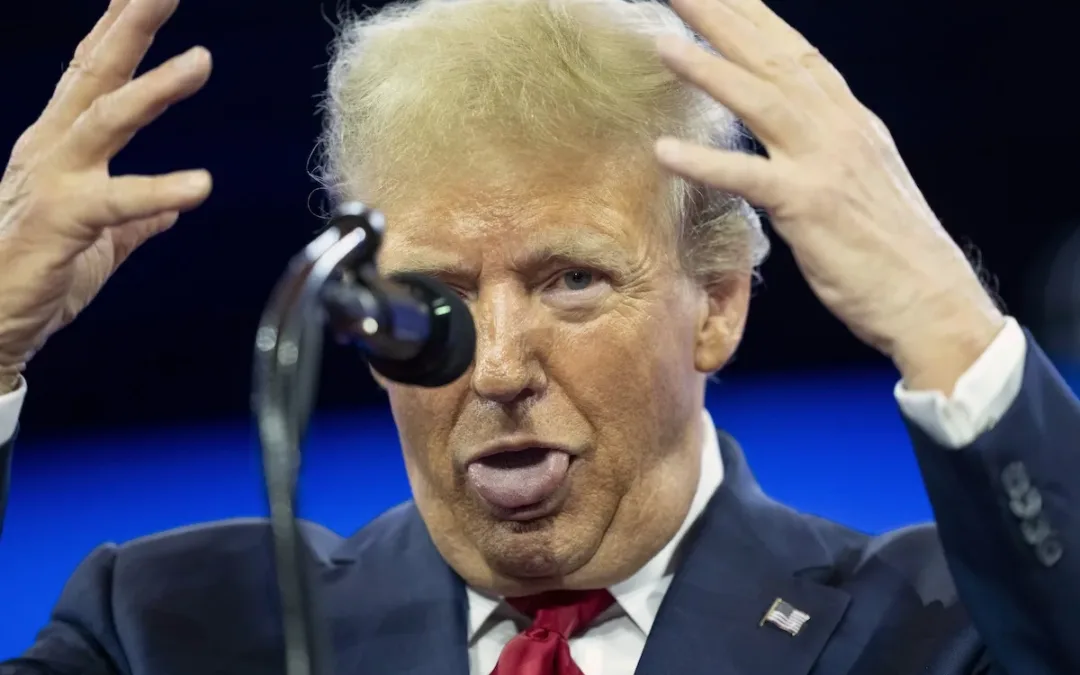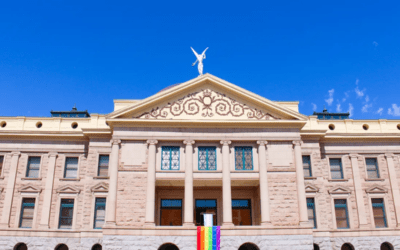An internal government report released Monday contradicts President Trump’s assessment that hospital administrators are “thrilled to be where they are.”
American hospitals are facing “severe” and “widespread shortages” of staff, personal protective equipment (PPE), ventilators, and COVID-19 testing supplies, according to a new watchdog report from the Department of Health and Human Services Office of Inspector General.
The report’s findings back up the pleas from governors, doctors, nurses, and hospital administrators about the severity of the shortage and how it puts both patients and staff at risk. President Trump, however, said over the weekend that hospital administrators were “thrilled to be where they are.” Trump has also said that states are lying about what they need and repeatedly downplayed the scope of the crisis.
The report, written by Principal Deputy Inspector General Christi Grimm, also found that hospitals are running out of basic necessities, such as thermometers, disinfectants, linens, toilet paper and food.
When asked on Monday at his daily coronavirus press briefing about the report from the nonpartisan Health and Human Services inspector general’s office, Trump told reporters: “It is wrong.”
“So, give me the name of the inspector general?” he asked before suggesting without evidence, “Could politics be entered into that?”
The “national pulse survey” surveyed hospital administrators from 323 hospitals across 46 states, the District of Columbia, and Puerto Rico from March 23-27 in an effort to determine the key challenges hospitals are facing during the pandemic. Here are the report’s key findings:
Widespread Shortages of PPE
By now, the PPE shortage is something of a national scandal. There have been countless news reports about the shortages and how they’re impairing hospitals’ abilities to treat patients. The new survey underscores the severity of the problem.
“Hospitals reported that widespread shortages of PPE put staff and patients at risk,” Grimm wrote. “Hospitals reported that heavier use of PPE than normal was contributing to the shortage and that the lack of a robust supply chain was delaying or preventing them from restocking PPE needed to protect staff.”
This shortage could cost lives, and doctors and nurses across the country have spoken out about the PPE shortage and how it threatens their health. Many doctors and nurses are breaking protocol and reusing masks, while others are resorting to using swim goggles, bandanas, and trash bags to protect themselves. Some nurses have even quit their jobs over the lack of protections.
RELATED: I’m a Hospice Nurse. Here’s Why I Chose to Step Away From the Job I Love During Coronavirus.
State and local leaders have repeatedly spoken out about the consequences of a PPE shortage and have called on the federal government to help. Instead, President Trump has said the federal government is merely a “backup” and it’s up to states and their governors to find PPE, while his administration simultaneously interferes with states’ own efforts to do so.
This free-for-all has raised fears among hospital administrators. “Hospitals also expressed uncertainty about availability of PPE from Federal and State sources and noted sharp increases in prices for PPE from some vendors,” Grimm’s survey reads.
Anticipated Shortages of Ventilators
Perhaps more than any other concern, the shortage of ventilators could be the most immediately threatening for patients with COVID-19 and push hospitals into making brutal choices.
“Hospitals anticipated that ventilator shortages would pose difficult decisions about ethical allocation and liability, although at the time of our survey no hospital reported limiting ventilator use,” Grimm wrote.
Put more bluntly, the United States’ ventilator shortage could force providers into rationing care, effectively choosing which patients to intubate to try to save, and which to let die. Governors have begged the federal government for ventilators, but President Trump has dismissed the needs from several states and accused them of playing politics.
New York, which is the nation’s biggest coronavirus hot spot, is in danger of running out of ventilators this week, despite receiving thousands of additional ventilators from Washington, Oregon, and China in recent days. Gov. Andrew Cuomo has repeatedly asked the federal government for an additional 30,000 ventilators, but has only received 4,400 from the national stockpile, which is managed by FEMA.
“I have a feeling that a lot of the numbers that are being said in some areas are just bigger than they’re going to be,” Trump said during an interview with Fox News’ Sean Hannity. “I don’t believe you need 40,000 or 30,000 ventilators.”
Severe Shortages of Testing Supplies and Extended Waits for Results
“Hospitals reported that severe shortages of testing supplies and extended waits for test results limited hospitals’ ability to monitor the health of patients and staff,” Grimm’s report reads.
The lack of complete testing kits has rendered hospitals unable to keep up with the demand for COVID-19 tests, which has also created a backlog in test results. “Hospitals reported frequently waiting 7 days or longer for test results,” the report found. This delay also extends patient stays, which strains bed availability, PPE supplies and staffing.
The nationwide testing shortage has become something of a national scandal, and while testing has picked up in recent weeks, it remains difficult for many Americans to obtain tests.
Difficulty Maintaining Adequate Staffing and Supporting Staff
Hospitals are not only finding themselves overwhelmed by the crush of patients, but are also dealing with staffing shortages: Some frontline medical workers have quit over lack of protections, while others have fallen sick from COVID-19.
“Hospitals reported a shortage of specialized providers needed to meet the
anticipated patient surge and raised concerns that staff exposure to the virus may exacerbate staffing shortages and overwork,” Grimm wrote.
Several states have tried to fill the shortage by recruiting recently retired healthcare workers and new medical school graduates into the workforce, but in places like New York City, it may not be enough. Hospital administrators also said they were concerned that “fear and uncertainty were taking an emotional toll on staff, both professionally and personally.”
Difficulty Maintaining and Expanding Hospital Capacity to Treat Patients
Hospitals are also concerned that they will run out of beds and special rooms needed to treat and isolate COVID-19 patients. Many hospitals also reported that post-acute-care facilities, such as nursing homes and rehabilitation centers, also require negative COVID-19 tests before accepting discharged patients.
“This means that some patients who no longer required acute care were taking up valuable bed space while waiting to be discharged,” the report reads.
New York and California are creating temporary hospitals to try and accommodate the surge in patients, but it’s unclear whether that will be enough.
Other Findings
Hospitals also reported that “changing and sometimes inconsistent guidance from Federal, State, and local authorities posed challenges and confused hospitals and the public.” These conflicting guidelines cover everything from testing criteria, use of PPE, and how to get supplies from the national stockpile.
RELATED: Trump Passes the Buck to States on Giving Nurses and Doctors What They Need
The report also found that hospitals are running low on critical supplies such as intravenous therapy (IV) poles, linens, toilet paper, food, and thermometers. Hospitals are also grappling with increasing costs attributable to the surge in COVID-19 patients while simultaneously experiencing decreasing revenues due to the postponement of elective procedures.
“Many hospitals reported that their cash reserves were quickly depleting, which could disrupt ongoing hospital operations,” Grimm wrote. Hospitals will receive $100 billion under the recently-passed coronavirus stimulus bill, but it’s unclear how far those funds will go.
As of Monday evening, the coronavirus has infected nearly 370,000 Americans and killed nearly 11,000.

BREAKING: AG Kris Mayes sues rental corporations for conspiratorial price-fixing
It looks like, legally speaking, rent really may be “too damn high.” Arizona Attorney General Kris Mayes announced Wednesday a lawsuit against nine...

Op-ed: Trump’s journey from hosting The Apprentice to being the biggest loser
Leading up to the 2016 election, Donald Trump crafted an image of himself as a successful businessman and a winner. But in reality, Trump has a long...

Kari Lake’s plan for the US Senate: ‘The end of democracy’
The world’s most far-right political leaders flocked to National Harbor, Maryland, last week for a conservative conference where attendants idolized...

Flight attendants picket at more than 30 airports in ‘unprecedented’ show of solidarity
Hundreds of flight attendants picketed at Phoenix Sky Harbor Airport last week, calling attention to stagnant wages with low purchasing power, poor...




